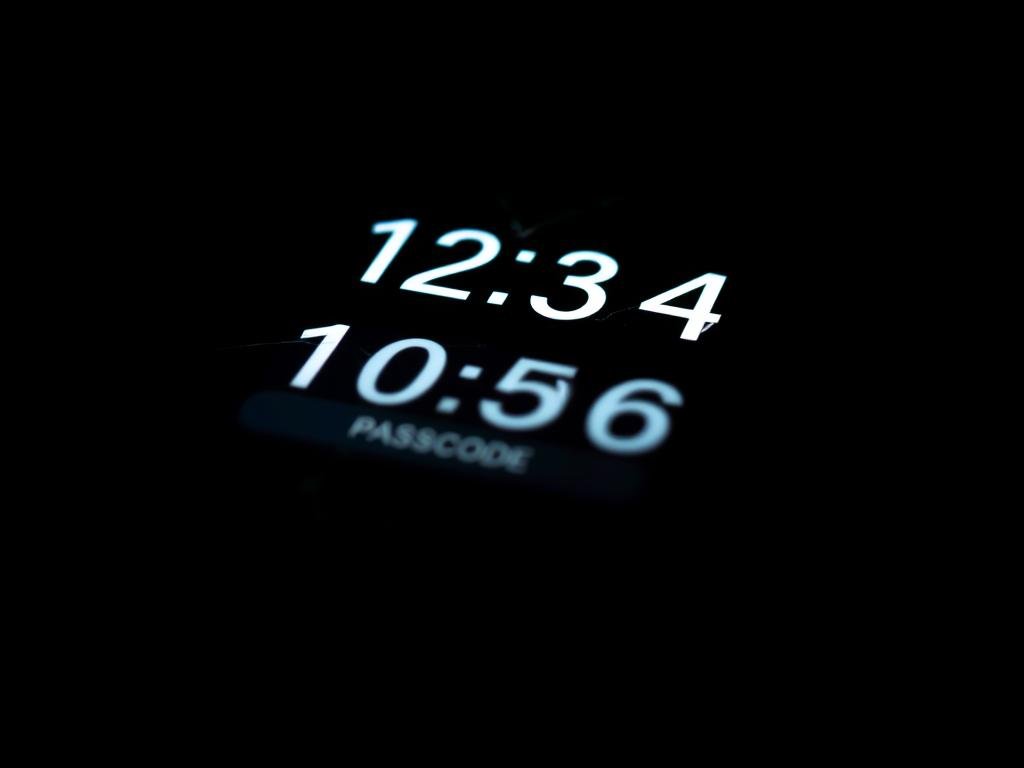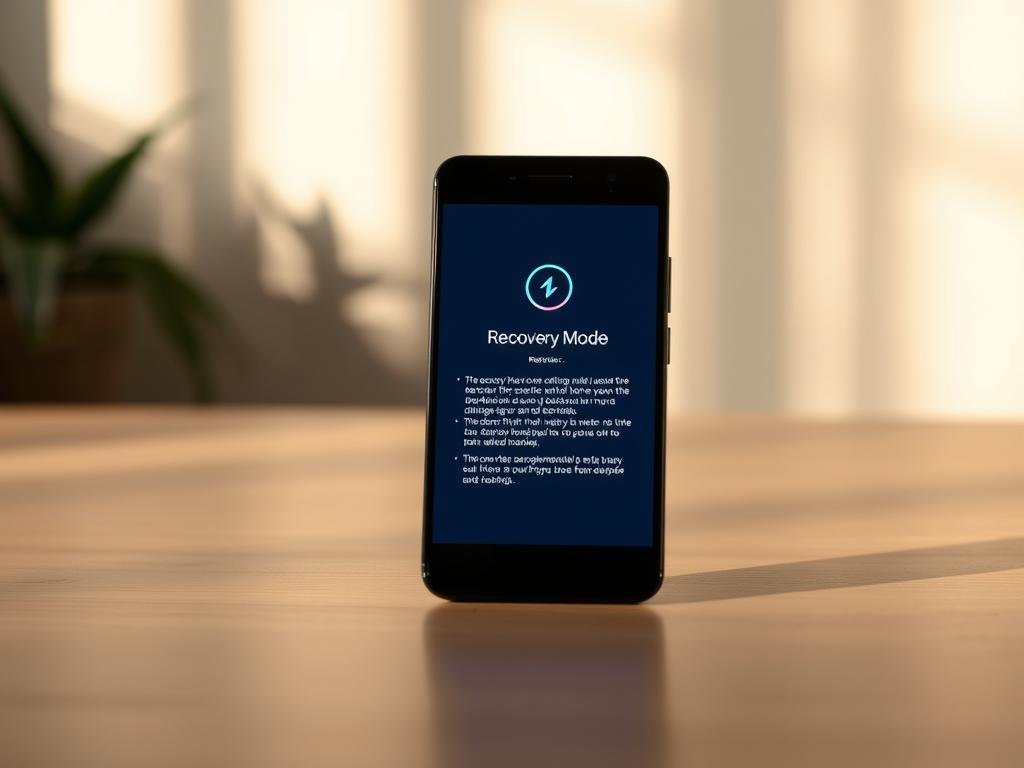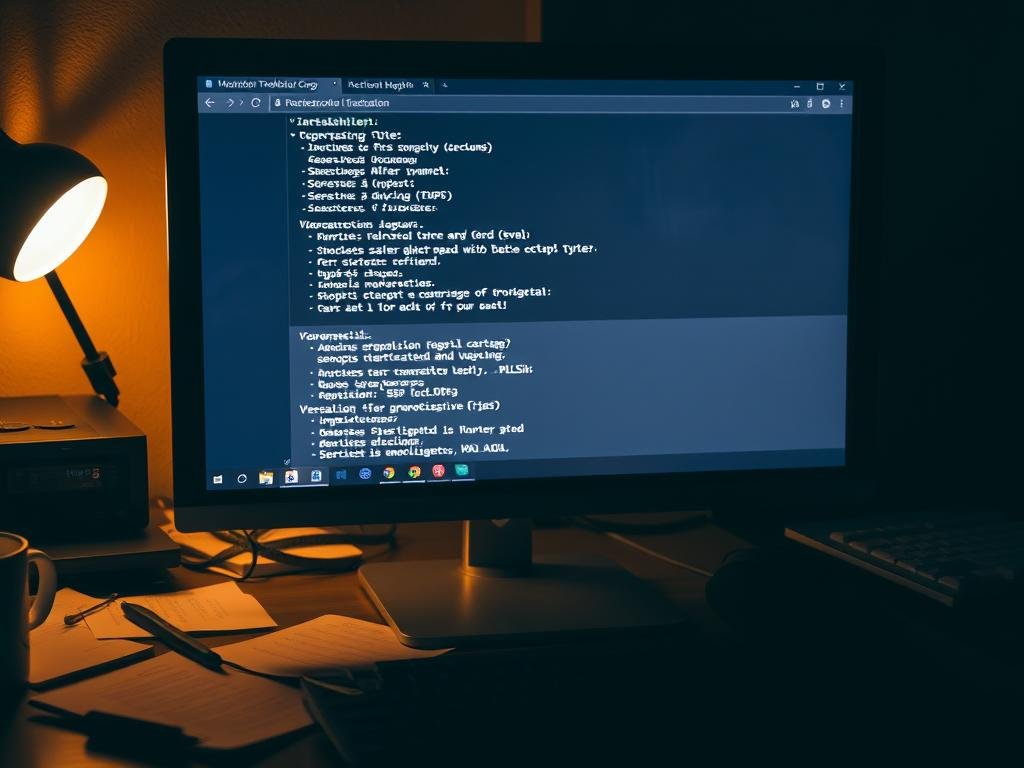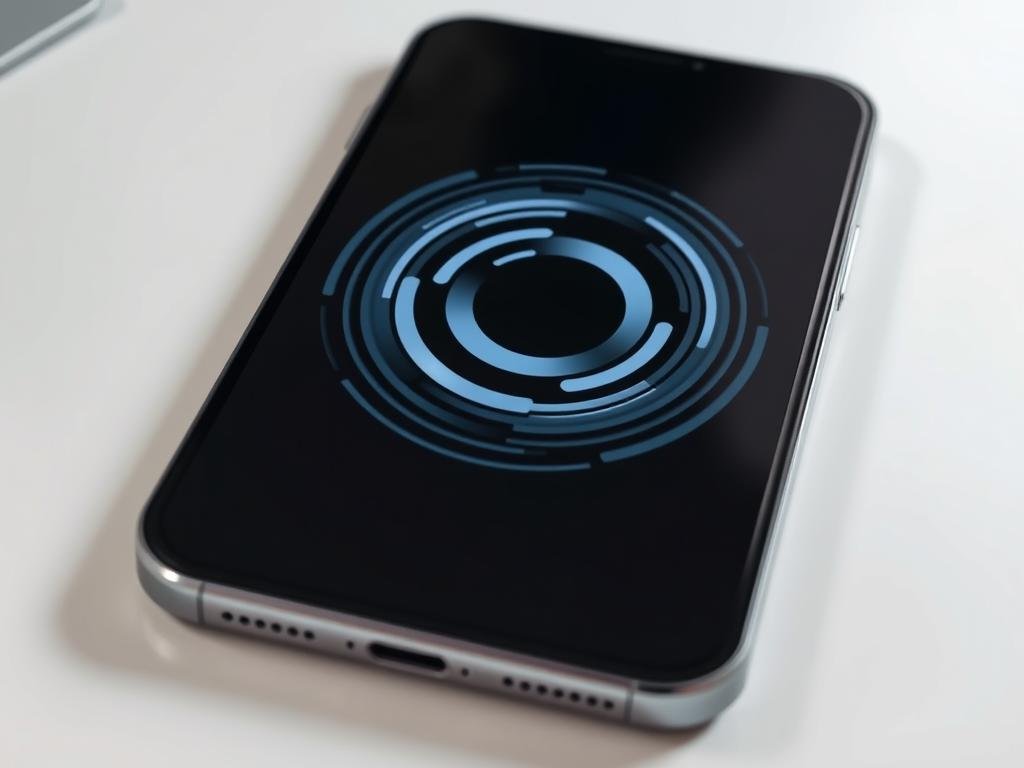Hard Reset iPhone in Seconds – Quick Guide Surprising fact: nearly 70% of users store thousands of photos, which often slows a device and can leave the screen frozen at the worst moment.
When your iPhone stalls, a force restart is a safe first step. It won’t erase your data, and it often clears temporary issues fast.
In this brief guide you’ll learn the exact button sequence for modern and older models so you can recover from a black screen or unresponsive apps with confidence.
Quick wins: you’ll see the Apple logo as the visible cue that the process worked, and you’ll know when a deeper fix is needed.
Need more detail? Follow a clear walkthrough and related steps, including recovery options, at this guide.
What a hard reset is and when to use it
A sudden app freeze or blank display usually calls for a button-driven reboot. This manual restart forces the hardware to power-cycle and can clear temporary faults when the touch screen won’t respond.
Hard reset vs soft restart vs factory reset
Hard reset is a forced reboot using physical buttons. It helps when the screen is frozen or the device ignores touch input.
Soft restart is the standard restart you trigger in Settings. It closes processes gracefully and is best for minor issues.
Will a hard reset delete your data?
A forced reboot does not erase saved data. However, unsaved changes in open apps can be lost because processes stop immediately.
“A manual reboot is a quick troubleshooting step that rarely affects stored content.”
- Use a hard reset when the phone won’t accept input or apps lock up completely.
- Try a soft restart first for recurring but mild issues; escalate only if it fails.
- Reserve a factory reset for persistent problems or when you need a clean start; back up data in Settings or to a computer first.
| Action | Effect on data | Best use case |
|---|---|---|
| Hard reset | Data kept; unsaved app changes may be lost | Screen frozen, no touch response |
| Soft restart | Data safe; processes close normally | Minor glitches, slow performance |
| Factory reset | All content erased; restore from backup required | Selling the device or persistent system issues |
how to hard reset iphone: the quick buttons sequence
A fast, precise set of button taps and a steady hold will often wake a stalled phone.
On models with a Side button, follow a specific rhythm. First, quickly press release volume up, then quickly press release volume down. Next, press hold the Side button until the screen goes black and the Apple logo appears.
Ignore the power slider if it shows. Keep holding Side until the logo appears; that confirms the forced restart took place.
- Timing matters: the press release rhythm for the volume buttons must be quick, then shift to a steady hold on Side.
- Watch the screen cues — when the apple logo appears, the device will boot normally.
- If no logo appears after several attempts, your phone may need Recovery Mode or DFU assistance via a computer.
| Step | Action | Expected cue |
|---|---|---|
| 1 | Quickly press release Volume Up | No change on screen |
| 2 | Quickly press release Volume Down | No change on screen |
| 3 | Press hold Side until reboot | Apple logo appears |
For a detailed, step-by-step guide or recovery options, see the full walkthrough.
Force restart steps by model
Match the button sequence to your model for a reliable forced restart.
iPhone 8 and later (X, XS, XR, 11–16)
Quickly press release the Volume Up, then quickly press release the Volume Down.
Next, press hold the Side button until the apple logo appears on the screen. That visual cue confirms the hard reset worked.
iPhone 7 and 7 Plus
Press and hold the Volume Down and Sleep/Wake buttons together.
Keep holding until the apple logo shows, then release both buttons. This sequence forces a restart when the screen is frozen.
iPhone 6s and earlier
Press and hold the Home and Sleep/Wake (Top or Side) buttons at the same time.
Hold them until the Apple logo appears. The Home key is the main difference on older models.
- Visual confirmation: the apple logo is the same across models.
- If the screen stays unresponsive, retry the exact cadence for your model.
- For more recovery options, see the short guide on reset iphone.
How to hard reset a locked iPhone without a passcode
A frozen Lock Screen does not block the physical restart sequence. The buttons still send commands at the system level, so you can regain control without changing settings.

What a hard reset can and can’t do on the lock screen
What it can do: A forced reboot restarts the phone and often clears temporary freezes. It does not erase your data and works even when the screen is locked.
What it can’t do: This action won’t bypass your passcode, Face ID, or Touch ID. After the restart you still must enter the passcode to re-enable biometrics.
- You can perform a hard reset while the device is locked; buttons work at the system level.
- A hard reset doesn’t remove or bypass your passcode, Face ID, or Touch ID—security stays intact.
- Unsaved changes in open apps may be lost, but stored data remains.
- If you try to reset iphone without unlocking and problems persist, be ready to use Recovery Mode.
- Avoid repeated hard resets in quick succession; repeated attempts can signal deeper software trouble.
| Action | Effect | Next step |
|---|---|---|
| Hard reset | No data erasure; unsaved app changes may be lost | Enter passcode after reboot |
| Reset iphone without unlocking | Device restarts but security remains | Plan Recovery Mode if misbehavior continues |
| Repeated attempts | May indicate deeper issue | Seek repair or software restore |
If your buttons don’t work: alternatives to force restart
If physical buttons won’t respond, you can still restart your device using on-screen tools or a timed power cycle. These methods help when the screen is responsive but hardware keys are stuck or damaged.
AssistiveTouch for a standard restart without hardware buttons
Enable AssistiveTouch in Settings > Accessibility > Touch > AssistiveTouch. A floating menu appears and provides a Restart control you can tap.
This route performs a normal reboot without pressing any physical keys. It’s handy when an app causes freezes but the touch layer still works.
Let the battery drain, then charge to reboot
Apple does not offer a button-free forced reboot. If you need a full restart and keys are broken, allow the battery to drain completely. Then plug the device back in; it will boot once it has enough power.
This process won’t harm your data, but it can take time if the battery holds some charge.
- If an app keeps freezing, remove or update that app after the reboot.
- If the device stays stuck, prepare to use Recovery Mode with a computer for more advanced repair.
| Situation | Alternative | Effect |
|---|---|---|
| Buttons non-responsive | Enable AssistiveTouch via Settings | Standard restart using on-screen menu |
| Hardware failure prevents forced reboot | Let battery drain and then charge | Device boots when power returns |
| Restart won’t clear problem | Use Recovery Mode with a computer | Deeper software repair or restore |
For targeted repair instructions and the original reset steps for recent models, see the linked reset steps for recent models.
When a hard reset isn’t enough: Recovery Mode and Restore
If the phone won’t finish booting, use Recovery Mode and a computer app to reinstall system files. This process helps when the screen shows the apple logo for minutes or the device loops and normal steps fail.

Enter Recovery Mode and connect to a computer
Connect your device via Lightning to a computer. On macOS Catalina or later, use Finder. On Windows or macOS Mojave and earlier, open iTunes (latest version).
Start with Update, then choose Restore if needed
Force restart the phone but keep holding until the recovery mode screen appears instead of the apple logo. In Finder or iTunes, select your device and choose Update first.
Update attempts to reinstall iOS without erasing content. If Update fails, select Restore iPhone to return the device to factory settings.
“Start with Update to preserve data; choose Restore only when Update won’t complete.”
- Use Recovery Mode when the device won’t boot or the apple logo appears for long periods.
- Keep the cable connected; interruptions can force you back into recovery mode.
- Ensure Finder or iTunes is on the latest version for smooth communication.
| Step | Action | Expected result |
|---|---|---|
| 1 | Connect device to computer | Finder or iTunes recognizes device |
| 2 | Force restart and hold until recovery screen | Recovery Mode displayed instead of apple logo |
| 3 | Select Update in Finder/iTunes | iOS reinstalls, data preserved if successful |
| 4 | Choose Restore iPhone if Update fails | Device returns to factory settings, data erased |
Advanced fix: DFU mode for deeper software issues
DFU mode reaches deeper system layers when standard recovery steps fail. This state lets you reinstall firmware when a normal hard reset or recovery mode won’t clear severe corruption.
How to enter DFU on models with Side and Volume buttons
First, connect your device to a computer and make sure Finder (macOS Catalina+) or open itunes on Windows or older macOS is running the latest version.
Press Volume Up, then Volume Down quickly. Next, press hold the Side button until the screen goes black.
Now press hold Side + Volume Down for about five seconds. Release Side but keep holding the Volume Down until your computer detects a device in DFU.
Restore firmware in Finder/iTunes, then exit DFU
- In Finder or iTunes: choose Restore iPhone to reinstall firmware and iOS. This can recover a device when factory settings or a factory reset are required.
- DFU shows no on-screen prompts; rely on your computer for detection and progress updates.
- To exit DFU: press Volume Up, then Volume Down, then hold Side until the Apple logo appears and the unit boots.
| Action | When | Result |
|---|---|---|
| Enter DFU | Recovery mode and hard reset fail | Computer detects DFU state |
| Restore iPhone | Computer prompts | Firmware and iOS reinstalled |
| Exit DFU | After restore or cancel | Device reboots to normal mode |
Troubleshooting common problems after a hard reset
After a forced restart, use this checklist to tackle lingering screen or performance problems. The steps below help you narrow whether the issue is software or hardware and point toward the right next move.

Black or frozen screen persists after restart
If the screen stays blank, plug the charger in for several minutes and try the force restart sequence again. Low power can mimic a frozen display.
If the display still won’t respond, test with a different cable or charger and try later; persistent black screens can be a hardware fault.
Stuck on the Apple logo or recovery mode loop
When the phone boots into recovery mode repeatedly, connect it to a computer and open Finder or iTunes. Choose Update first to preserve data.
If Update fails, select Restore iPhone to rebuild the system. Repeated loops after a restore often need professional repair.
Rapid battery drain, overheating, or performance issues
Open Settings > Battery to find heavy app usage and remove or limit those apps. Close background activity and avoid gaming while charging to reduce heat.
Check for iOS updates, free up storage, and uninstall apps that crash often. If problems persist after software restores, seek a service check for possible hardware damage.
| Symptom | First step | Next step |
|---|---|---|
| Black screen | Charge and retry restart | Try different cable; service if needed |
| Recovery loop | Connect to Finder/iTunes, Update | Restore if Update fails |
| Battery/heat | Check Settings > Battery | Limit heavy apps; update iOS |
Protect your data: backups before resets and restores
Protecting your photos and messages is the best first step before any major system action. A recent backup keeps your files safe if you must use Recovery Mode or a factory restore.
Back up with iCloud from Settings
Open Settings, tap your name, then choose iCloud > iCloud Backup. Tap Back Up Now to capture messages, photos, app data, and settings.
Tip: Use reminders to back iphone icloud before major iOS updates or when apps behave oddly.
Back up to a computer with iTunes/Finder
Connect the device to a Mac (Finder on macOS Catalina+) or a PC (iTunes). Select the phone and create an encrypted backup.
An encrypted copy includes Health data and saved passwords. Keep recent backups so you can reset iphone confidently if Recovery Mode or DFU is needed.
- Back up with iCloud in Settings before advanced troubleshooting.
- Create an encrypted local backup in Finder or iTunes for full data coverage.
- Move large photo libraries to a computer if iCloud storage is limited.
- After service or a factory action, restore from your newest backup to reduce downtime.
For extra guidance on cloud options, see our short back iphone icloud guide.
Conclusion
A precise sequence of presses offers a fast path from frozen screen to normal operation.
Make sure you know the timing: quickly release volume up, quickly release volume down, then press hold the Side button until the apple logo appears. That cue shows the force restart worked.
When you’re experiencing repeated freezes, try a force restart first. If problems persist, use recovery mode or connect a computer for Update before any factory reset iphone.
Keep your passcode handy after a reboot, and keep backups in Settings so a final restore or DFU is painless. For older models, press hold Home and Top/Side together instead of the release volume button cadence.
FAQ
What is a hard reset and when should you use it?
A hard reset force-restarts your device when it’s frozen, unresponsive, or an app prevents normal operation. Use it for crashes, frozen screens, or when the touch screen won’t respond. It doesn’t erase data like a factory restore, but it can fix many temporary software issues quickly.
How does a hard reset differ from a soft restart and a factory restore?
A soft restart is a normal power off and on that closes apps gracefully. A hard restart forces the hardware to reboot when a soft restart fails. A factory restore erases all content and settings and reinstalls iOS — use that when problems persist or you’re wiping the device.
Will a hard reset delete your data?
No. A forced restart does not delete personal data or settings. Only a factory reset, Recovery Mode restore, or DFU restore will erase content without a backup.
What is the quick button sequence for a force restart?
Press and release the Volume Up button, then press and release Volume Down, then press and hold the Side button until the Apple logo appears. Ignore the power slider — keep holding until the screen goes black and the logo returns.
What if the Side and volume buttons are unresponsive during the sequence?
If hardware buttons don’t respond, try AssistiveTouch for a software restart, or let the battery drain and then recharge. If those fail, connect to a computer and use Recovery Mode.
What are the force restart steps by model?
For iPhone 8 and later: quickly press and release Volume Up, then Volume Down, then hold Side until the Apple logo. For iPhone 7 and 7 Plus: press and hold Volume Down and Sleep/Wake together. For iPhone 6s and earlier: press and hold Home and Sleep/Wake (Top or Side) together.
Can you force restart a locked device without the passcode?
Yes, you can force restart a locked device to reboot it, but this won’t remove the passcode or bypass Activation Lock. To erase or restore a locked device, use Recovery Mode or DFU with a computer and your Apple ID credentials for reactivation.
How do you use AssistiveTouch to restart if buttons fail?
Enable AssistiveTouch in Settings > Accessibility > Touch. Use the on-screen menu: Device > More > Restart. If you can’t access Settings, you’ll need Recovery Mode or let the battery drain and recharge.
When should you use Recovery Mode and connect to a computer?
Use Recovery Mode when repeated restarts don’t fix the issue, the device is stuck on the Apple logo, or iOS won’t update. Connect the device to a Mac (Finder) or Windows PC (iTunes), then follow prompts to Update or Restore.
Should you choose Update or Restore in iTunes/Finder?
Always try Update first — it reinstalls iOS without erasing data. If Update fails or the device remains faulty, choose Restore, which erases content and returns the device to factory settings.
What is DFU mode and when do you need it?
DFU (Device Firmware Update) mode loads firmware-level recovery for deeper software problems that Recovery Mode can’t fix. Use DFU if restores repeatedly fail or the device won’t exit boot loops. DFU will erase the device, so back up first if possible.
How do you enter DFU mode using Side and Volume buttons?
The sequence varies by model and must be precise: connect the device to a computer, power it off, then use the device-specific button timing to enter DFU. Follow Apple’s official steps on support.apple.com or use trusted guides in iTunes/Finder for exact timing.
What if the screen stays black or frozen after a restart?
Try the force-restart sequence again. If the issue persists, connect to a computer and attempt Recovery Mode or DFU. If hardware damage is suspected, contact Apple Support or visit an Apple Store for diagnostics.
Why might a device stay stuck on the Apple logo or Recovery Mode loop?
Corrupted iOS files, failed updates, or interrupted restores cause loops. Use Update in iTunes/Finder first; if that fails, perform a Restore or DFU restore to reinstall firmware fully.
What if you experience rapid battery drain, overheating, or slow performance after a restart?
Check for pending iOS updates, review battery usage in Settings, uninstall problematic apps, and restart the device. If issues continue, back up and restore iOS via Finder or iTunes, or visit Apple Support for further testing.
How should you back up your device before a restore?
Back up with iCloud in Settings > [your name] > iCloud > iCloud Backup and tap Back Up Now. Or connect to a computer and create a backup in Finder (macOS) or iTunes (Windows). Verify the backup completed before restoring.
Can you restore from a computer backup if iCloud isn’t available?
Yes. Use Finder on macOS or iTunes on Windows to restore a local backup after a Restore or DFU process. Choose the most recent backup to recover apps, settings, and data.
